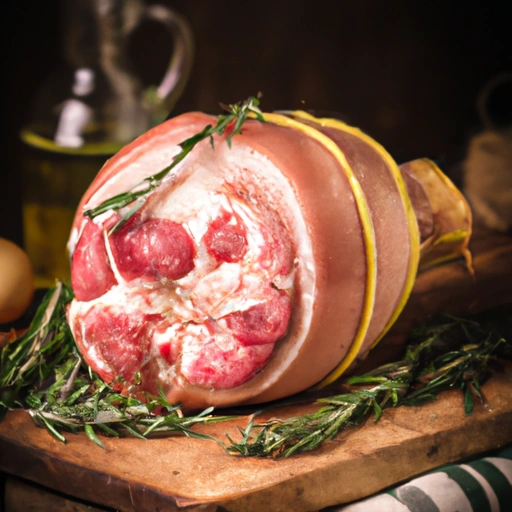Pork Leg
Description

Pork leg, also known as fresh ham, is a substantial cut of meat sourced from the hind leg of a pig. This cut is known for its lean meat, which is characterized by a fine grain and a moderate amount of fat that contributes to its succulence and rich flavor. Pork leg can be purchased either bone-in or boneless, and its size may vary, making it suitable for a range of dishes from roasted entrees to cured specialties.
Common uses
Pork leg is widely utilized in various culinary applications, including roasting, smoking, and curing. Its robust structure makes it an excellent choice for slow-cooked dishes, where the meat can become exceptionally tender and infused with flavors. Additionally, pork leg is often used in the preparation of cold cuts and deli meats, further showcasing its versatility.
Nutritional value
Calories
A 3-ounce (85 grams) serving of cooked, lean pork leg contains approximately 140 to 160 calories.
Protein
This same serving size provides about 20 to 23 grams of protein, essential for muscle growth and repair.
Fat
The fat content can vary, but on average, there are 5 to 8 grams of fat, with a mix of saturated and unsaturated fats.
Carbohydrates
Pork leg contains no carbohydrates, making it a low-carb ingredient suitable for many diets.
Vitamins
It is a good source of B-vitamins, particularly thiamin, niacin, B6, and B12, which are crucial for energy metabolism and neurological health.
Minerals
Pork leg is rich in minerals like zinc, selenium, phosphorus, and iron, contributing to various bodily functions including immune response and oxygen transport.
Health benefits
When consumed in moderation, pork leg can be a healthy addition to a balanced diet. Its high protein content helps in building and repairing tissues, while B-vitamins support metabolism. The minerals found in pork leg play essential roles in maintaining immune health and bone strength.
Potential risks
However, pork leg can also be high in sodium, especially when cured or processed. Excessive consumption of sodium can lead to increased blood pressure and heart disease. Additionally, high intake of saturated fats, found in the fatty portions of pork leg, may contribute to increased cholesterol levels and cardiovascular risk.
Common recipes
Pork leg is used in a variety of recipes such as roasted pork leg, smoked ham, pulled pork, stews, and even in the preparation of cured meats like prosciutto.
Cooking methods
Popular cooking methods include roasting, braising, smoking, and slow-cooking, which help tenderize the meat and enhance its natural flavors.
Pairing with other ingredients
Pork leg pairs well with a multitude of flavors, from sweet glazes like honey or maple to savory herbs like rosemary and thyme. It also complements a range of side dishes, including roasted vegetables, mashed potatoes, and legumes.
Summary
Pork leg is a versatile ingredient that can be adapted to a wide array of recipes and cooking methods. With its rich flavor and beneficial nutrients, it can be a valuable component of meals around the world, provided it is consumed in moderation and balanced with other healthful foods.